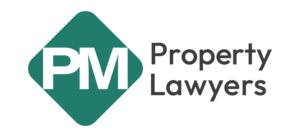Protocol forms are standardised documents that are part of the Conveyancing Protocol, which was developed by the Law Society of England and Wales. The Conveyancing Protocol provides guidelines and best practices for conveyancers to follow when handling property transactions. Protocol forms are used to facilitate effective communication and transparency between parties involved in the process.
The forms cover different stages and aspects of the conveyancing process, aiming to ensure that relevant information is shared, important issues are addressed, and the transaction progresses smoothly. They help streamline the conveyancing process by providing a consistent framework for conveyancers to work within.
Importance of protocol forms
Protocol forms play a crucial role in the conveyancing process, benefiting both conveyancers and their clients. Here are a few reasons why protocol forms are important:
Standardisation and Efficiency: By using standardised protocol forms, conveyancers can ensure that the necessary information is captured consistently across different transactions. This promotes efficiency and reduces the likelihood of errors or omissions.
Clear Communication: Protocol forms facilitate clear and transparent communication between the parties involved in a property transaction. They provide a structured format for conveying important details and enable conveyancers to address any potential issues or concerns proactively.
Risk Management: Protocol forms help manage risks associated with property transactions. They prompt conveyancers to gather essential information, such as property boundaries, rights of way, or planning permissions. By addressing these factors early on, potential risks or complications can be identified and addressed.
Compliance and Professional Standards: Following the Conveyancing Protocol and using protocol forms demonstrates a commitment to professional standards. It ensures that conveyancers adhere to industry best practices and comply with legal and regulatory requirements.
Common protocol forms
There are several protocol forms that are commonly used in the conveyancing process. Some examples include:
Property Information Form (TA6): This form is completed by the seller and provides important information about the property, such as boundaries, utilities, alterations, and ongoing disputes.
Fittings and Contents Form (TA10): This form lists the items included or excluded from the sale of the property, ensuring clarity between the buyer and seller regarding what is included in the transaction.
Leasehold Information Form (TA7): This form is specific to leasehold properties and captures information related to the lease, service charges, ground rent, and other leasehold-specific details.
Mortgage Lender’s Legal Representation Form: This form is used by the buyer’s conveyancer to confirm their representation of the mortgage lender and ensure compliance with the lender’s requirements.
Final points on protocol forms
Protocol forms are standardised documents that play a crucial role in the conveyancing process. They provide a structured framework for conveyancers to gather and communicate important information, ensuring transparency and efficiency. By adhering to the Conveyancing Protocol and utilising protocol forms, conveyancing firms can effectively manage risks, promote clear communication, and maintain professional standards.
As a trusted conveyancing firm, we are well-versed in the use of protocol forms and their significance in property transactions. Our experienced team of conveyancers can guide you through the process, ensuring that all necessary forms are completed accurately and in a timely manner.





